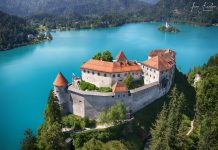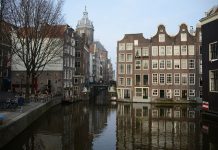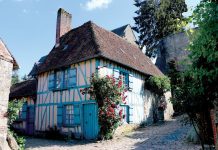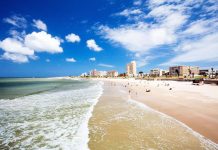Danube Bridges
Eight road bridges and two railway bridges cross the Danube within the precincts of the city. These bridges form an inalienable part of the city-scape. The bridges in the city-centre – the Margaret (Margit), Chain (Lánc), Elizabeth (Erzsébet), and the Liberty (Szabadság) Bridge– are determining elements of the city’s panorama.
Although at the end of World War II, the retreating German forces blew up all the bridges in Budapest, they have all been rebuilt essentially in their original form.
The Margaret Bridge gives access to the southern portion of Margaret Island (Margitsziget).
The Chain Bridge is Budapest’s first permanent stone bridge. Built at the instigation of Count István Széchenyi, who first proposed such a bridge in 1832, it was finally constructed between 1842 and 1849. It was based on the design of William Tierney Clark, and erected under the supervision of Adam Clark – both Englishmen.
The Elizabeth Bridge was rebuilt between 1961 and 1964, on the supports of the previously blown-up bridge – but utilising modern structural elements.
The Liberty Bridge was the first bridge in Budapest to be rebuilt after World War II; its predecessor (named after Francis Joseph, the Emperor of the Austro-Hungarian Empire), was erected between 1894 and 1896 – in time for the Millennium celebrations.
Margaret Island (Margitsziget)
Margaret Island in Budapest is a 2,5km long island in the Danube River connected to Buda and Pest by the Margaret Bridge and the Árpád Bridge. During the Middle Ages the island was called as “Hares Island”, and was a popular site for monastic orders. Nowdays, Margaret Island is public park and a popular recreational area for tourists and locals, as well. There are two public baths on the island: Alfréd Hajós Sports Swimming Pool with an indoor and two open-air pools and Palatinus Hotel Outdoor Baths.
Ruins of a Dominican Nunnery
The Dominican nunnery founded by Béla IV. in honour of the Blessed Virgin Mary on the Isle of Hares (former name of the Margaret Island) was the most prominent ecclesiastical institution of the island , and also the richest nunnery of utmost importance in the Hungarian kingdom. Its wealth and the miracles attributed to the person of the king’s daughter Margaret contributed to its fame, and made the institution a religious house for the daughters of the highest rank aristocracy. The ruin site of the former monastery is one of the most significant medieval monastic complexes of the Hungarian capital.
Ruins of a Franciscan Friary
The friary was founded by Béla IV. on the Isle of Hares(former name of the Margaret Island). Out of this medieval monastic complex the façade of the Gothic church and the vestiges of one sidewall can still be seen today. The stones of the friary that had been destructed during the years of the Turkish occupation were utilized for the construction of the palatine’s villa being built round the year 1796. Later this house became an important literary life centre of the nineteenth-century Budapest.






























